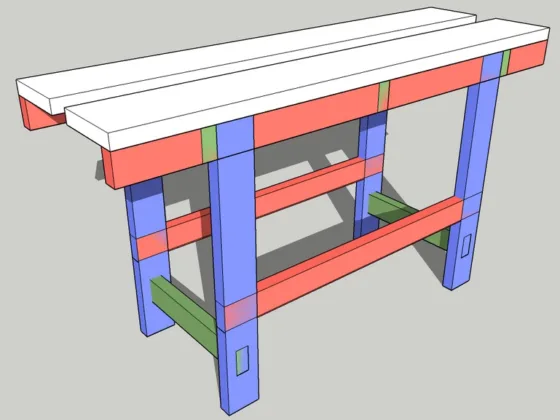Plant grapes in outside soil and care for grapes under cover.
The cold climate lean-to greenhouse design has a short south wall and a tall north wall, relying on the steep roof angle to collect the maximum amount of sunlight. Grapes grow on a south-facing trellis built at a 40-45 degree angle near the greenhouse roofline.

Read Also:
Planting Greenhouse Grapes
Because grapevines have cold dormancy requirements plant the vines in a single row outside of the greenhouse along the full length of the short south wall and feed the canes through the wall into the greenhouse.
Keeping the trunks outside will also help prevent too early bud break. Northern climates frequently suffer from sudden spring freezes and delaying bud break even by a few weeks can be an advantage.
Grapes are grown entirely inside the greenhouse respond to their protected environment and break bud too soon, often with disastrous results. Cane access holes should be generous enough to allow for cane thickening over the years.
Reinforce the holes and stuff insulating material snugly around the canes to keep out drafts and prevent rodents and other small pests from gaining entry into the greenhouse. Only the trunks will be outside the greenhouse while fruiting canes will be inside where it is warmer and dryer.
Train vines up onto trellising at the lower south side so that the majority of growth takes place overhead. Make sure to keep an open canopy to permit good air circulation in and around the vines as they climb along the trellis from the south side to the higher north side.

Caring for Greenhouse Grapes
As with traditionally planted grapevines, those planted inside a greenhouse must be monitored for insect infestation and disease. The most common problem pests for greenhouse grapes are grape berry moths, grape leafhoppers and leaf form grape phylloxera.
The grape grower should be acquainted with the symptoms of infestation and methods of controlling them.
Diseases to watch out for in greenhouse grapes include both powdery and downy mildew, black rot and phomopsis cane and leaf spot.
Keep a ladder inside the greenhouse for trimming and inspecting the vines along with a pair of sharp sheers and disinfectant for sanitizing the sheers between cuts should diseased plant parts need to be removed. Keep the floor of the greenhouse weed-free and flat to facilitate debris removal at the end of the season.
As grapevine trunks are outside the greenhouse, sufficient rainfall will do all the necessary watering. If the grower must do supplemental watering this is also accomplished outside and won’t raise the humidity around the growing leaves and fruit, reducing the dangers of some fungal infections.
The angle of the roof will allow any snow load to side down onto the trunks, providing an insulating cover during the cold winter months. Should a cold, bare winter be anticipated some additional insulating material may be added. The vines inside the greenhouse can be left as is or protected with floating row covers, hay or other insulating material.









